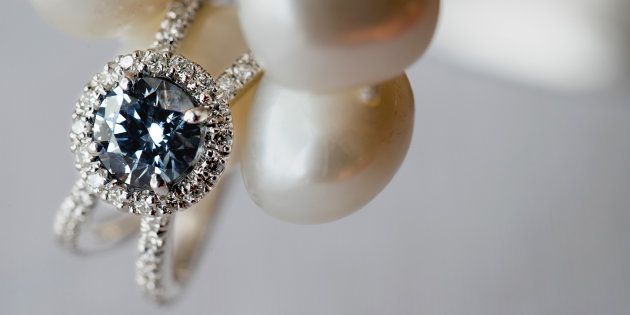
For thousands of years the earth's most brilliant stone, the diamond, has been sought after for its timeless beauty; but today, with the need for sustainability casting a question mark over mining practices, a new kind of diamond has come to the fore — the cultured diamond.
"The cultured diamond is a stone grown under laboratory conditions, rather than naturally underground," explained Anthony Matthews, founder of local diamond and gemstone store Shiny Rock Polished.
These lab-created diamonds, also known as engineered diamonds are grown in highly controlled laboratory environments using advanced technological processes that duplicate the conditions under which diamonds naturally develop when they form in the mantle, beneath the Earth's crust, according to Brilliant Earth.
And there is a demand for them.
"There is definitely an increase in demand for cultured diamonds, especially for those shopping for an engagement ring. Cultured diamonds offer better value for money compared to their natural counterparts," he added.
Here are six things you should know about the cultured diamond:
1. Diamond in every way
"The first thing to know about a lab-grown diamond is that it is 100 percent a diamond in every way," said Matthews. "It is not a crystal imitation, a moissanite, or a cubic zirconia," he added. The only notable difference is that a cultured diamond is made in a lab and not mined. They are in every way as hard, as durable, and as brilliant as a mined diamond.
They consist of actual carbon atoms arranged in the characteristic diamond crystal structure, and since they are made of the same material as natural diamonds, they exhibit the same optical and chemical properties, noted Brilliant Earth.
2. Incredible range of colours
3. Value for money
Coloured diamonds are more attainable with cultured diamonds, as the mined coloured diamond can cost millions of rands, whereas a similar lab-grown stone would cost anything between R140,000 to more than R400,000 — depending on size, quality and colour.
4. Still a luxury purchase
Although cultured diamonds are more affordable than mined diamonds, they are by no means cheap. "They're still regarded as a valuable purchase, especially in the fancy colours and higher grades," Matthews pointed out.
5. Socially and environmentally conscious
Cultured diamonds are regarded as a much better socially and environmentally conscious alternative to mined stones, as they are ethically grown with minimal environmental impact. "Many more diamond buyers are opting for cultured diamonds for this reason," said Matthews.
6. Certificate of authentication
Lastly, cultured diamonds are graded using the same system as natural diamonds. "We sell our cultured diamonds with a certificate of authentication," explained Matthews. "We advise anyone buying one to make this a mandatory part of the purchase," he concluded.
